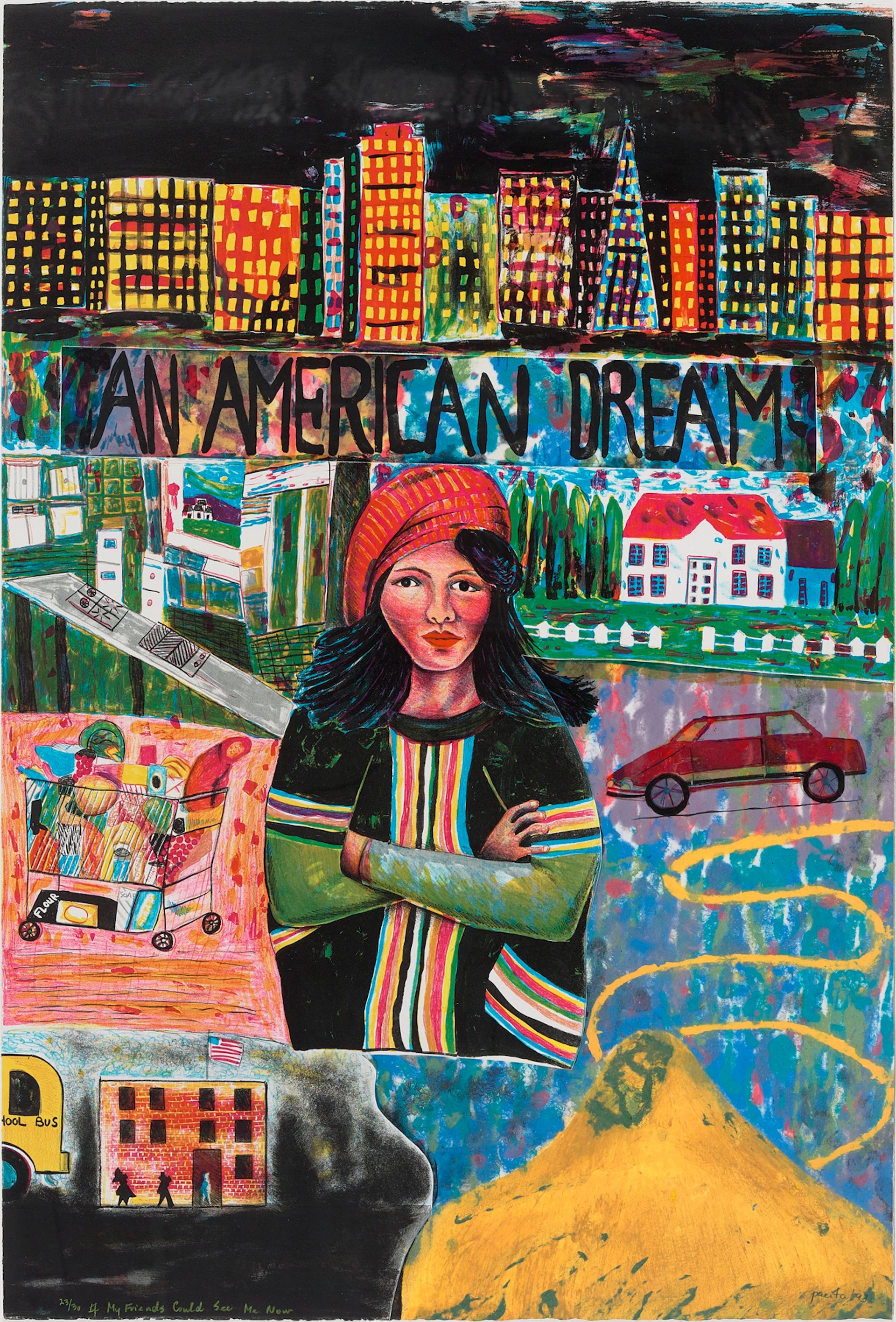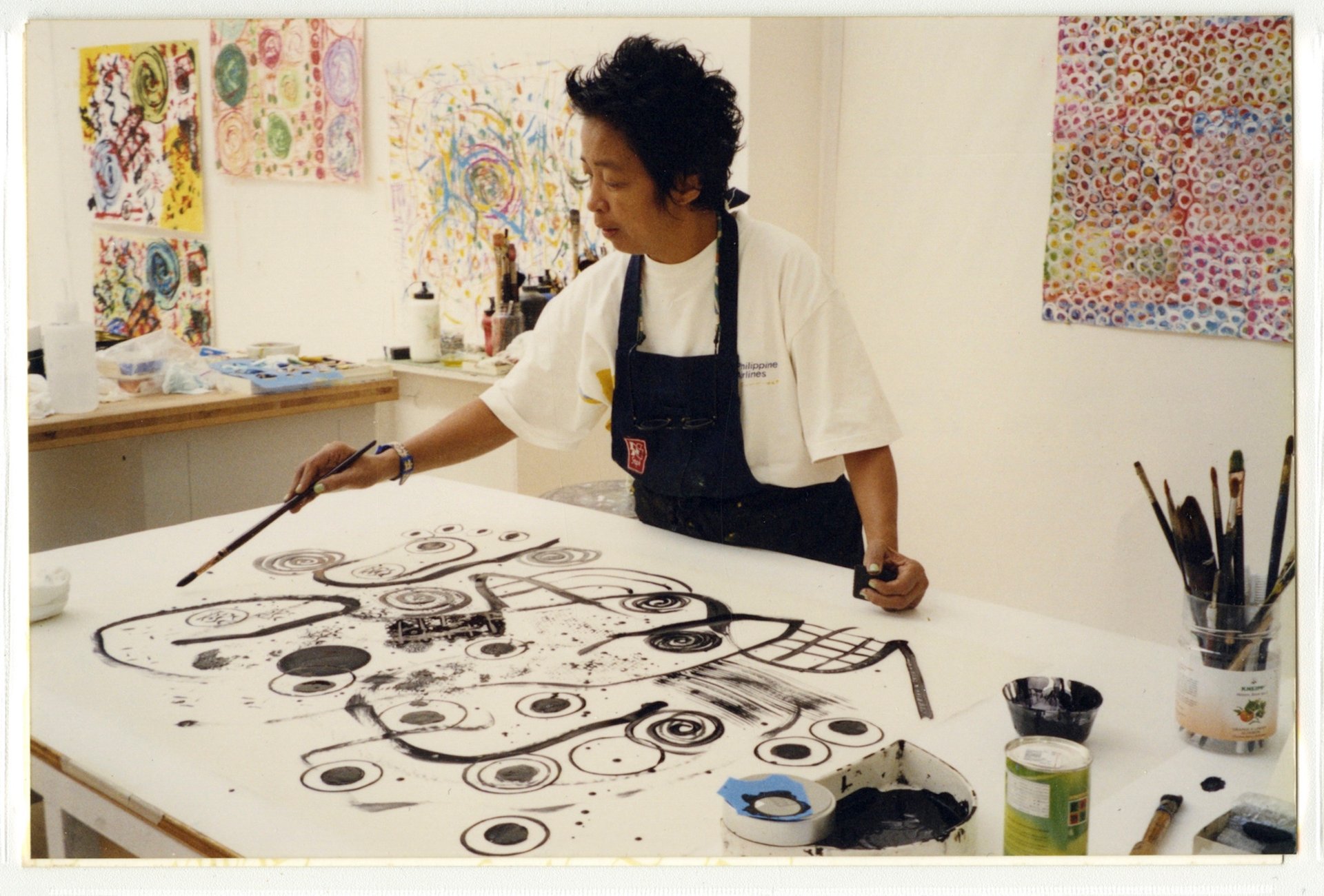Stanford University acquires Filipina American artist Pacita Abad’s archive
In Pacita Abad’s lifetime, the Filipina American artist made over 5,000 works—influenced by her travels in more than 60 countries—and exhibited in more than 250 shows, largely in Asia and Africa. But it was her posthumous travelling retrospective—which opened in 2023 at the Walker Art Center in Minneapolis, almost two decades after her death in 2004 at age 58—that brought Abad’s exuberant, multifaceted, 32-year art practice to the attention of US institutions.
Now Stanford University has acquired the artist’s archives, a gift of the Pacita Abad Art Estate, which has also provided funding to catalogue the 120 linear feet of archival boxes filled with photographs, correspondence, exhibition records and personal artefacts.
“This is how art history gets written, from these primary-source materials,” says Lindsay King, the head librarian of the Bowes Art and Architecture Library, part of Stanford University Libraries, which is stewarding the acquisition in collaboration with the school’s Cantor Arts Center. King anticipates that the archive will be available to students and scholars within the next year.
Pacita Abad in San Francisco, 1971 Pacita Abad archives, Deptartment of Special Collections and University Archives, Stanford University Libraries, Stanford, California
The acquisition of the Pacita Abad Archives furthers the mission of Stanford’s cross-departmental Asian American Art Initiative (AAAI). Conceived in 2018 and co-directed by Aleesa Pitchamarn Alexander, an associate curator at the Cantor, and Stanford’s assistant professor of art history Marci Kwon, the AAAI has made Stanford a leader nationwide in the preservation, collection, exhibition and study of this field.
“Stanford is the only university that’s made a focus on Asian American art a forever commitment,” says Veronica Roberts, the Cantor’s director. (Around 25% of Stanford’s student body identifies as Asian American.) Over the past few years, the Cantor’s art collection in this area has grown from around 30 works to more than 800. When the museum initiated discussions with Abad’s widower, Jack Garrity, about acquiring art, he asked if the university would be interested in her archives too.
1970s Asian odyssey

Pacita Abada, If My Friends Could See Me Now, 1991 SFMoMA, purchase, by exchange, through a gift of Peggy Guggenheim. © Estate of Pacita Abad
“For the last 20 years, we’ve been looking for the appropriate place to archive the work,” says Garrity, the director of Abad’s estate.
In 1973, he was a student at Stanford, when he met Abad, who had moved to San Francisco from the Philippines in 1970. Instead of going to law school as she had intended, Abad decided to join Garrity on a year-long trip across Asia when she was inspired to become an artist. Largely self-taught, Abad worked at Stanford’s Medical Center while Garrity finished his MBA. Her 1976 painting Foothill Cabin—acquired by the Cantor and at present on view—conveys their domestic joy on a ranch near Stanford before their extended travels to places including Bangladesh, Sudan, the Dominican Republic, Thailand and Indonesia for Garrity’s work as an economist.
The Cantor has also acquired one of Abad’s signature “trapuntos”—her vibrant large-scale quilted paintings on textiles, stitched and stuffed rather than mounted on stretchers, that she began making in 1981. They often pay tribute to the spirit world or marine life.
When Abad knew she was dying from cancer, she told Garrity: “You have to make sure my paintings live,” he recalls. “I had my marching orders.” He shepherded her work and papers from Singapore ultimately to California, where he organised his garage as a library. “I knew that one day there would be probably an Asian American curator interested in Pacita’s work,” he says.

Pacita Abad working on Circles in My Mind exhibition for Singapore Tyler Print Institute, 2003 Pacita Abad archives, Department of Special Collections and University Archives, Stanford University Libraries, Stanford, California
That call eventually came from Victoria Sung at the Walker Art Center. She spent extensive time in Garrity’s garage researching the retrospective that travelled to San Francisco Museum of Modern Art, MoMA PS1 in New York, and the Art Gallery of Ontario in Toronto.
Abad’s archives, which join the papers of other significant Asian American artists at Stanford, including Ruth Asawa and Bernice Bing, includes “all the letters Pacita wrote to museums around the world for years, only to get rejections”, Garrity says. Her work has now been acquired by around 45 museums; most recently the Whitney Museum of American Art in New York selected a piece that was shown at the 2024 Venice Biennale.
“We know that there are people who chose Stanford for their PhD in part because of this archive,” says Roberts, “and because of Marci’s teaching in the AAAI.” Kwon always brings her popular Asian American art survey class to the Department of Special Collections that will hold the archive, says King.
“We have people who are ready to jump in,” she adds, “as soon as the Pacita Abad materials are available.”




